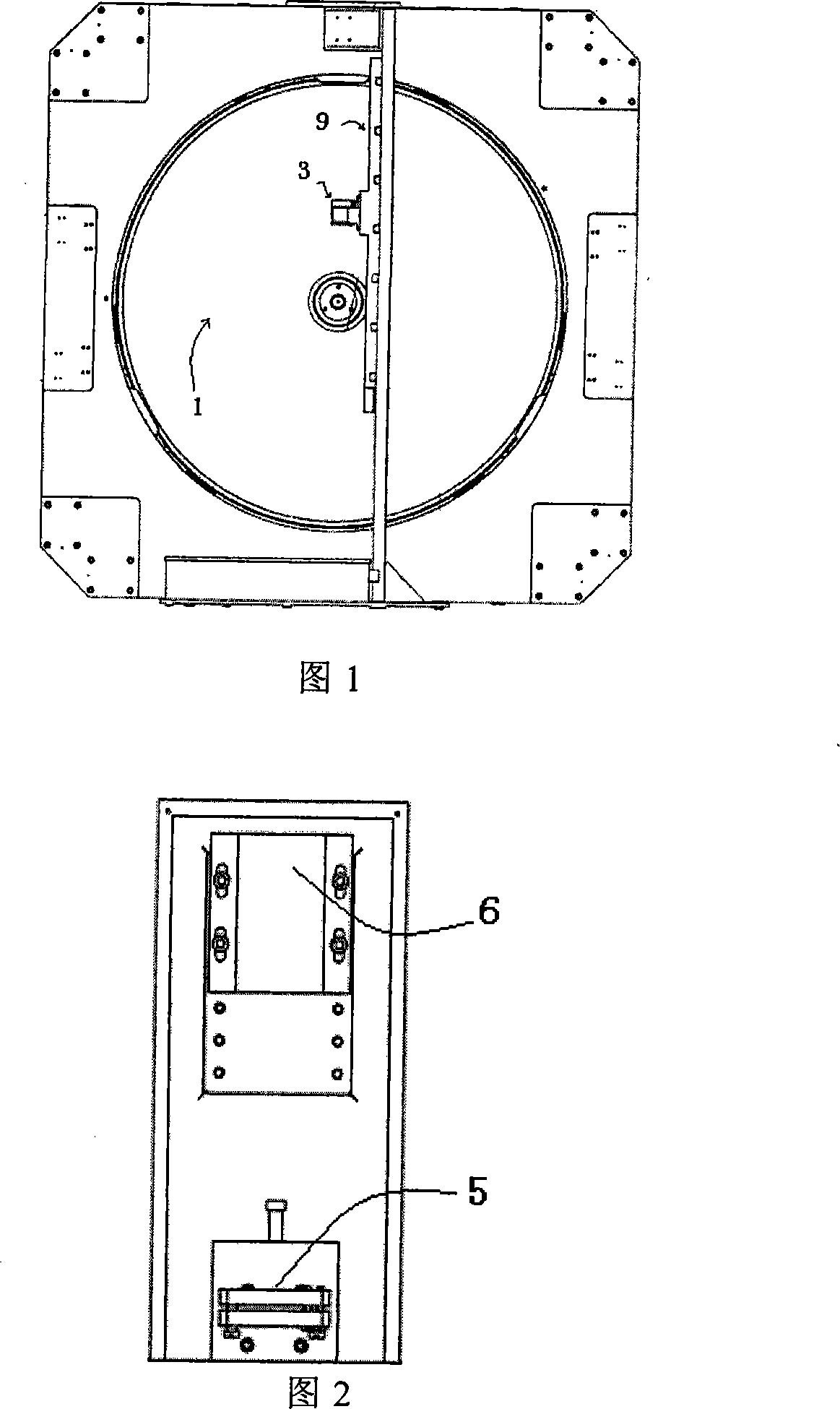Device for detecting large-sized perspective glass primary and secondary mirror spacing
A telescope, primary and secondary mirror technology, used in telescopes, measuring devices, optical devices, etc., can solve the problems of low spatial resolution and high cost of large-diameter optical systems, and achieve the effect of low system cost
- Summary
- Abstract
- Description
- Claims
- Application Information
AI Technical Summary
Problems solved by technology
Method used
Image
Examples
Embodiment Construction
[0028] The present invention will be described in detail below in conjunction with the accompanying drawings and specific embodiments.
[0029] Fig. 1 shows the position relationship diagram of the guide rail, the pentaprism and the main mirror. The installation direction and the direction of motion of the pentaprism are shown in the figure. Can step translation along guide rail 9 directions, the working surface of guide rail 9 is installed in the direction parallel to the vertical diameter of main mirror 1, and the distance with the vertical diameter of main mirror 1 should make the motion direction and The vertical diameters of the main mirror 1 coincide, and the base of the guide rail 9 is directly connected to the main mirror support (cross).
[0030] Figure 2 is a structural diagram of the reticle and CCD detection system. The reticle is located at the Karnofsky focus of the telescope, and the CCD detection system integrates a CCD image detector and a variable magnificati...
PUM
 Login to View More
Login to View More Abstract
Description
Claims
Application Information
 Login to View More
Login to View More - R&D
- Intellectual Property
- Life Sciences
- Materials
- Tech Scout
- Unparalleled Data Quality
- Higher Quality Content
- 60% Fewer Hallucinations
Browse by: Latest US Patents, China's latest patents, Technical Efficacy Thesaurus, Application Domain, Technology Topic, Popular Technical Reports.
© 2025 PatSnap. All rights reserved.Legal|Privacy policy|Modern Slavery Act Transparency Statement|Sitemap|About US| Contact US: help@patsnap.com


